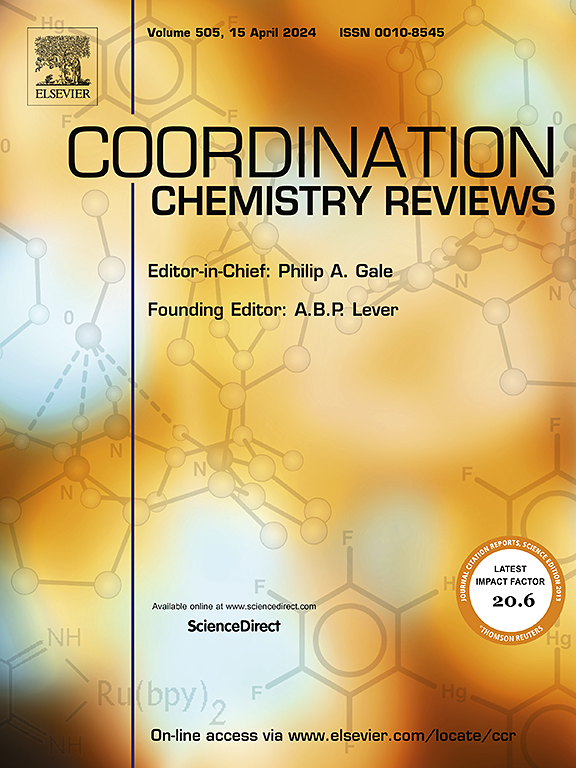Dendritic metallodrugs: An overview of their anticancer properties
IF 20.3
1区 化学
Q1 CHEMISTRY, INORGANIC & NUCLEAR
引用次数: 0
Abstract
Dendrimers are highly branched macromolecules synthesized in a stepwise manner. They can be easily functionalized on their surface to fulfill the desired properties, and to entrap diverse guests inside their structure. This review displays the different types of dendritic metal complexes which have been tested as anticancer drugs, at least on cells, and sometimes in vivo. The metal is located in most cases on the surface of the dendritic structure, but it can also be located inside the structure, in the branches or at the core. This review is mainly organized according to the type of dendrimers, in particular PAMAM (poly(amidoamide)), PPI (poly(propyleneimine)), PPH (poly(phosphorhydrazone)), CSi (poly(carbosilane)), and poly(arylether). The dendrimer can be a metal drug by itself, or it can function as a prodrug carrying and releasing the metal drug complexed at the branches. The IC50 values (the drug concentration necessary to kill 50 % of the cells) are given in most cases, to assess the efficiency of the dendritic drugs. The use of dendritic complexes for photodynamic therapy (PDT) against cancers is also reviewed.


求助全文
约1分钟内获得全文
求助全文
来源期刊

Coordination Chemistry Reviews
化学-无机化学与核化学
CiteScore
34.30
自引率
5.30%
发文量
457
审稿时长
54 days
期刊介绍:
Coordination Chemistry Reviews offers rapid publication of review articles on current and significant topics in coordination chemistry, encompassing organometallic, supramolecular, theoretical, and bioinorganic chemistry. It also covers catalysis, materials chemistry, and metal-organic frameworks from a coordination chemistry perspective. Reviews summarize recent developments or discuss specific techniques, welcoming contributions from both established and emerging researchers.
The journal releases special issues on timely subjects, including those featuring contributions from specific regions or conferences. Occasional full-length book articles are also featured. Additionally, special volumes cover annual reviews of main group chemistry, transition metal group chemistry, and organometallic chemistry. These comprehensive reviews are vital resources for those engaged in coordination chemistry, further establishing Coordination Chemistry Reviews as a hub for insightful surveys in inorganic and physical inorganic chemistry.
 求助内容:
求助内容: 应助结果提醒方式:
应助结果提醒方式:


